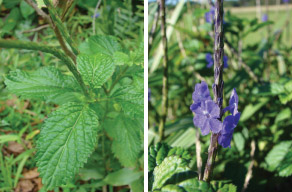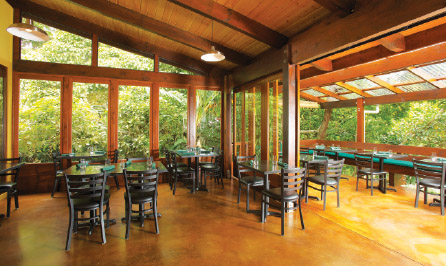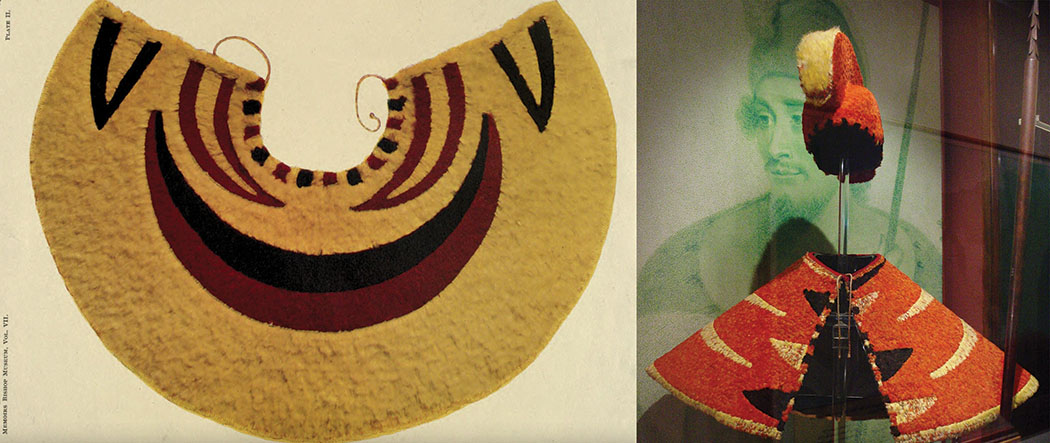
Healing Plants: Vervain
Don’t whack that weed! Vervain packs a practical punch all its own
By Barbara Fahs
 Vervain looks a bit like mint, which is its relative, so it’s easy to identify. However, it has no distinctive minty fragrance.
Vervain looks a bit like mint, which is its relative, so it’s easy to identify. However, it has no distinctive minty fragrance.
Called ha‘uoi and ōwī in Hawaiian, vervain’s botanical name is Stachytarpheta urticifolia. The common name “cayenne” vervain refers to the long, thin flower stalk, which is reminiscent of a cayenne pepper. Other common names include porterweed, snakeweed, nettleleaf velvetberry, and rat’s tail. It’s a perennial subshrub or herb that has been introduced to Florida, Puerto Rico, and Hawai‘i from tropical areas of Asia and the Americas. It has become naturalized on Kaua‘i, O‘ahu, Moloka‘i, Maui, and Hawai‘i and was first identified on O‘ahu in 1908, according to the University of Hawai‘i. Vervain is commonly found on the sides of roads and in disturbed areas at lower elevations.
Plants have woody stems and can grow to six-feet tall. The flower stalks can reach 12 to 18 inches: small tubular flowers with four or five petals can range in color from white to pale blue or purple, and are borne one-by-one along the stalk. Seeds readily form and disperse, quickly creating new plants.
You might have this plant growing wild in your yard if you live near sea level on either side of the island. You might even consider it a pesky invader because of its tendency to spread. Some people find it necessary to mow or weed whack areas where vervain can choke out other plants.
It’s also related to verbena, with which it shares a plant family, Verbenaceae. Our Hawaiian vervain is one of about 250 species included in this family. Several other species of vervain exist, some of which are native to England and the U.S. mainland.
Landscaping with Vervain
Verbena officinalis and blue vervain, or Verbena hastata, are often used in landscaping. Hawaiian vervain attracts bees and butterflies, so it is an important plant for providing food and habitat for several species of pollinating insects. EatTheWeeds.com reports the common butterflies that like vervain include skippers, viceroys, monarchs, and queens.
Vervain is a very hardy plant and can thrive on lava flows that have little soil. To introduce it to your garden, locate a young plant along the roadside or in a friend’s yard, carefully uproot it, and then transplant it to a sunny spot. Keep it watered until it becomes established.
Medicinal Applications

We know the medicinal properties of other members of the Verbena family, so we can use this knowledge to teach ourselves about the benefits of Hawaiian vervain. Botanical.com states that “official” vervain is an astringent and that it induces sweating, increases milk production, reduces muscle spasms and liver congestion, and is helpful for ailments such as painful or irregular menses, fevers, ulcers, and pleurisy. These uses are backed up in the Physician’s Desk Reference for Herbal Medicines, which adds that it also has been used for treating burns, malaria, and dislocated bones.
In Hawai‘i, vervain has been used to help heal infections such as staphylococcus: both teas and poultices were used in former times. The leaves have been used for cuts, bruises, and other uses.
Dr. W. Arthur Whistler mentions in his book, Polynesian Herbal Medicine, that the related Verbena litoralis, also known as ha‘uoi and ōwī, was more commonly used as medicine than cayenne vervain. Both plants were used in poultice form for the same medicinal purposes: that is, cuts, bruises, sprains, and rashes.
Culinary Uses
The small purple flowers taste like mushrooms. If you have a few minutes, collect a handful of these pretty little flowers and scatter them over your next salad or omelet as a colorful, tasty garnish.
A similar species, Stachytarpheta jamaicensis, is used to make a stout, dark beer in areas of Central America. It begins as tea, and then sugar and yeast are added. It’s worth a try with our cayenne vervain if you want to use some of your plants instead of mowing them. ❖
Photos courtesy Forest and Kim Starr
Contact writer Barbara Fahs.
Sources:
Physician’s Desk Reference for Herbal Medicines. Montvale, NJ: Medical Economics Company, 2000.
W. Arthur Whistler. Polynesian Herbal Medicine. Lawai, Kaua‘i: National Tropical Botanical Garden, 1992.
Plants.usda.gov/core/profile?symbol=STUR
Botanical.com/botanical/mgmh/v/vervai08.html
WildlifeOfHawaii.com/flowers/1211/stachytarpheta-spp-porterweed
EatTheWeeds.com/blue-porterweed-bottom-up


